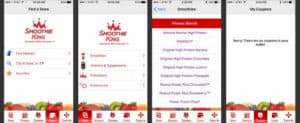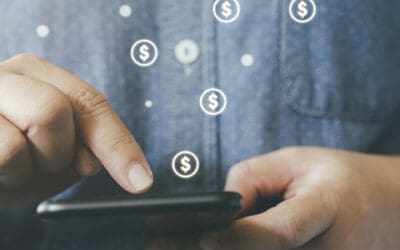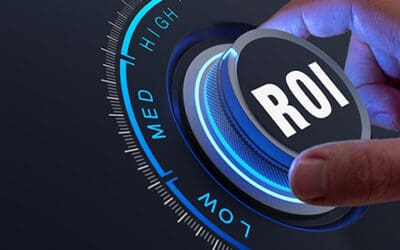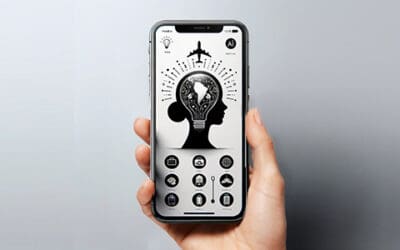
You Think Your App is Good. Here’s Why It’s Bad.
That all said, I am perplexed when I still see apps created that don’t have a clue about the user’s behaviors. Nor are they designed into the experience. Instead, companies are designing apps based cool graphical inferences or on what everyone else is doing. Competitor A has social check-in. We should have that. Competitor B has cool icons of products, lets do that. Competitor C lets you use Apple Pay. We will too. Yuck.
What app creators are failing to see is that apps should be developed based on the user’s behaviors and must have the ability to both change as the user interacts with the application and adapt as the behaviors change over time.
Let’s take a step back. This whole post was inspired when down the street from my house, up popped a new Starbucks and next door, a new Smoothie King, both of which I frequent. To date, I’ve not lived close enough to a Smoothie King for me to warrant having their app take up valuable real estate on my iPhone. But now, with one so close, I thought, what the heck, let’s get that sucker downloaded and start getting some value out of my brand loyalty. (Spoiler alert: That app is no longer on my phone.)
I’m motivated by what I need, the ability to satisfy that need is easy and the trigger is having the order button right in the main nav. See? Simple?
 But, let’s start with Starbucks. After all, they are heralded as having one of the best retail mobile app experiences. You know why: it’s behavior-based. The app is thoughtfully put together based a user’s behaviors as defined by her motivations, her ease of ability and a trigger to create the action. As an example, the ease of using the payment system at the moment of need: paying for an order. There are also behaviors designed around reloading the card, finding a store, Gold Star loyalty points, gifting and especially placing a mobile order. Each one of these features takes into account what behavior the person is exhibiting at that time. I’m in a hurry, I don’t have time to wait in line. My brain is aching for caffeine. The mobile order and payment experience is designed to fulfill those behaviors. I’m motivated by what I need, the ability to satisfy that need is easy and the trigger is having the order button right in the main nav. See? Simple?
But, let’s start with Starbucks. After all, they are heralded as having one of the best retail mobile app experiences. You know why: it’s behavior-based. The app is thoughtfully put together based a user’s behaviors as defined by her motivations, her ease of ability and a trigger to create the action. As an example, the ease of using the payment system at the moment of need: paying for an order. There are also behaviors designed around reloading the card, finding a store, Gold Star loyalty points, gifting and especially placing a mobile order. Each one of these features takes into account what behavior the person is exhibiting at that time. I’m in a hurry, I don’t have time to wait in line. My brain is aching for caffeine. The mobile order and payment experience is designed to fulfill those behaviors. I’m motivated by what I need, the ability to satisfy that need is easy and the trigger is having the order button right in the main nav. See? Simple? By contrast, the Smoothie King app was designed in a vacuum. There is no thought to what behaviors I have and how the app can meet those needs, let alone a trigger to make me want to do it. There are no payment options. No ordering. Terrible typography. In fact, there is nothing visually interesting. And what motivation would I ever have to want to check into a Smoothie King store on their app? The answer is none.
By contrast, the Smoothie King app was designed in a vacuum. There is no thought to what behaviors I have and how the app can meet those needs, let alone a trigger to make me want to do it. There are no payment options. No ordering. Terrible typography. In fact, there is nothing visually interesting. And what motivation would I ever have to want to check into a Smoothie King store on their app? The answer is none.
To avoid this dreadful scenario, start by asking what behaviors would your customer exhibit while using your app. What needs have to be fulfilled? What actions would you like to see take place? Pay? Reload a card? Use a loyalty card? Participate in a contest? Share the experience? Then, how do we trigger the behavior and transform it into the desired action. In other words, every action should serve a purpose and be relative to the situation. Then, you can reverse engineer the user experience and have it align with the motivations, abilities and triggers necessary to turn behavioral actions into habits.
You may also be interested in
Most Mobile Apps Don’t Make Money. Here’s Why.
Most brands believe their mobile app is making them money, when in reality, it probably is not. After all, when customers use a brand’s mobile app to complete a transaction, it doesn’t necessarily mean the mobile app is responsible for the transaction. It’s the...
Leveraging Artificial Intelligence (AI) to Uncover Sales Opportunities
Businesses are constantly on the lookout for innovative ways to maximize their revenue. Two of the most powerful sales techniques are cross-selling and upselling. Both strategies involve offering additional products or services to a customer during the sales process,...
How Adding True 1:1 Personalized Content to Your Mobile Marketing Can Generate Immediate ROI for Your Business
Personalized automated mobile marketing is more accessible and affordable than most business owners realize. It’s not just for large corporations anymore. It’s available for businesses of all sizes. With LighthousePE, your business can deliver deeply...
Personal AI Travel Itineraries Can’t Fully Deliver on the Promise of Personalization
Generative AI creates travel itineraries based on what everybody else has done, not what you’d like to do. The travel and tourism industry is all about inspiring people to have meaningful, memorable experiences when visiting a destination. Destination...





